The Visionary Who Shaped India's Future : Integrity, Wisdom, and Global Diplomacy
DR. Manmohan Singh: A Tribute to India's Visionary Leader and Economic Reformer
Dr. Manmohan Singh, India’s 14th Prime Minister, was a respected economist who played a crucial role in India’s economic transformation. Born in 1932 in undivided Punjab, he studied at prestigious institutions like Cambridge and Oxford. His tenure as Finance Minister in the 1990s marked the beginning of India’s economic liberalization, helping the country avoid financial collapse.
As Prime Minister from 2004 to 2014, Dr. Singh focused on economic growth, poverty alleviation, and strengthening India’s global position. His leadership faced challenges, including corruption scandals, but his personal integrity remained intact. Dr. Singh’s legacy continues to influence India’s economic and diplomatic trajectory.
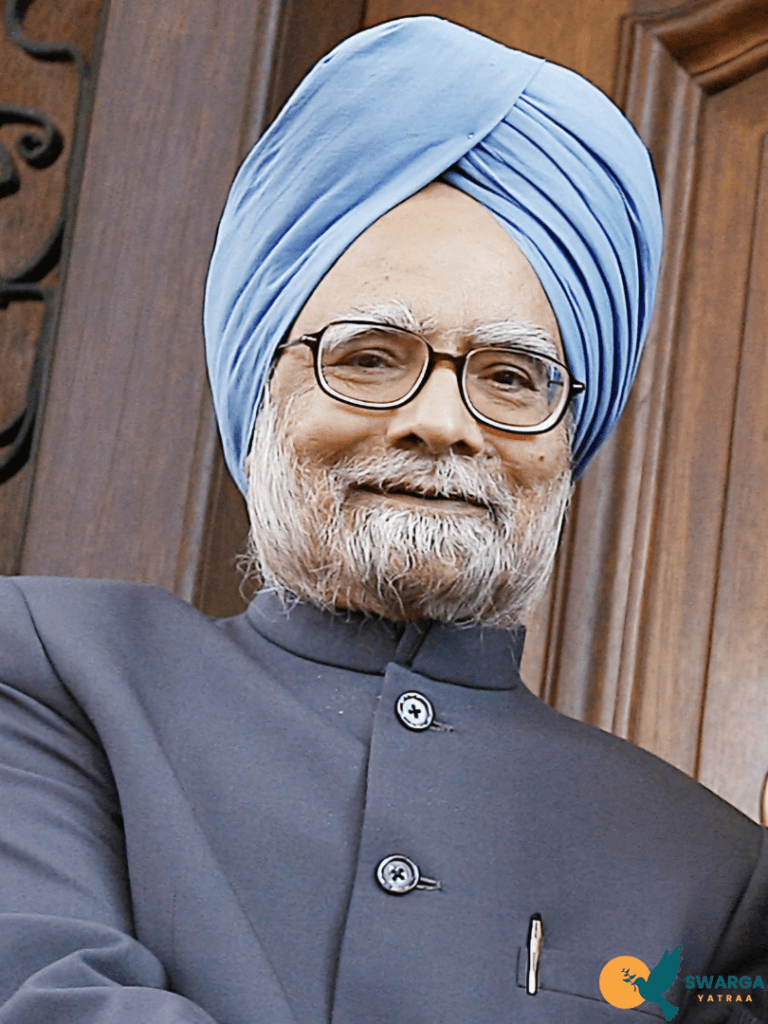
Early Life: From Humble Beginnings to Academic Excellence
Dr. Manmohan Singh was born on September 26, 1932, in Gah, a small village in Punjab (now in Pakistan). His early life was marked by simplicity and perseverance. Following the Partition of India in 1947, his family migrated to Amritsar, where he continued his education with great determination.
Schooling and College:
He completed his matriculation from Punjab University in 1948, excelling in academics.
Global Education:
Scholarships took him to the University of Cambridge, where he earned a First-Class Honours degree in Economics in 1957. He later pursued a doctorate at the University of Oxford, completing his DPhil in Economics in 1962. His thesis focused on India’s trade policies, a precursor to the path-breaking reforms he would implement decades later.
Academic and Early Professional Career
Before entering public service, Dr. Singh had a distinguished academic career:
Teaching Roles:
He served as a professor at Punjab University and the prestigious Delhi School of Economics.
International Contributions:
He worked briefly at the United Nations Conference on Trade and Development (UNCTAD) and later as Secretary-General of the South Commission in Geneva from 1987 to 1990.
These roles gave him a deep understanding of global economics and India’s place in the world.
The Economist Who Reshaped India: 1991 Economic Reforms
Dr. Singh’s political journey began in earnest when he joined the Indian government in the 1970s. He held several key roles, including:
- Chief Economic Advisor (1972)
- Secretary in the Ministry of Finance
- Governor of the Reserve Bank of India (1982–1985)
However, his most transformative role came in 1991 when India faced an economic crisis. Appointed Finance Minister under Prime Minister P.V. Narasimha Rao, Dr. Singh led the charge to liberalize the Indian economy.
Key Reforms Implemented:
- Devaluation of the Rupee:
Made Indian exports more competitive globally. - Reduction of Import Restrictions:
Opened India’s markets to foreign goods and services. - Encouragement of Foreign Investment:
Attracted global businesses to invest in India. - Privatization of State Enterprises:
Improved efficiency and reduced the burden on the public sector.
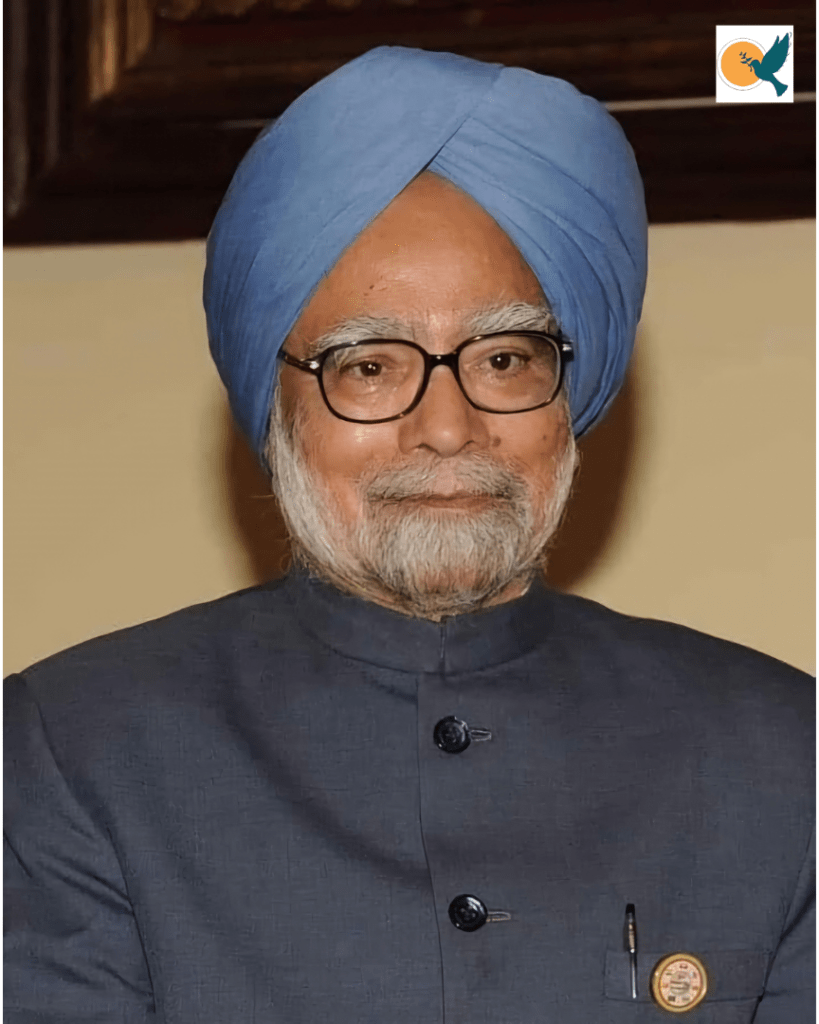
These reforms not only pulled India out of an economic abyss but also set the stage for decades of robust growth, earning Dr. Singh the title of the architect of India’s economic liberalization.
Prime Minister: A Decade of Service (2004–2014)
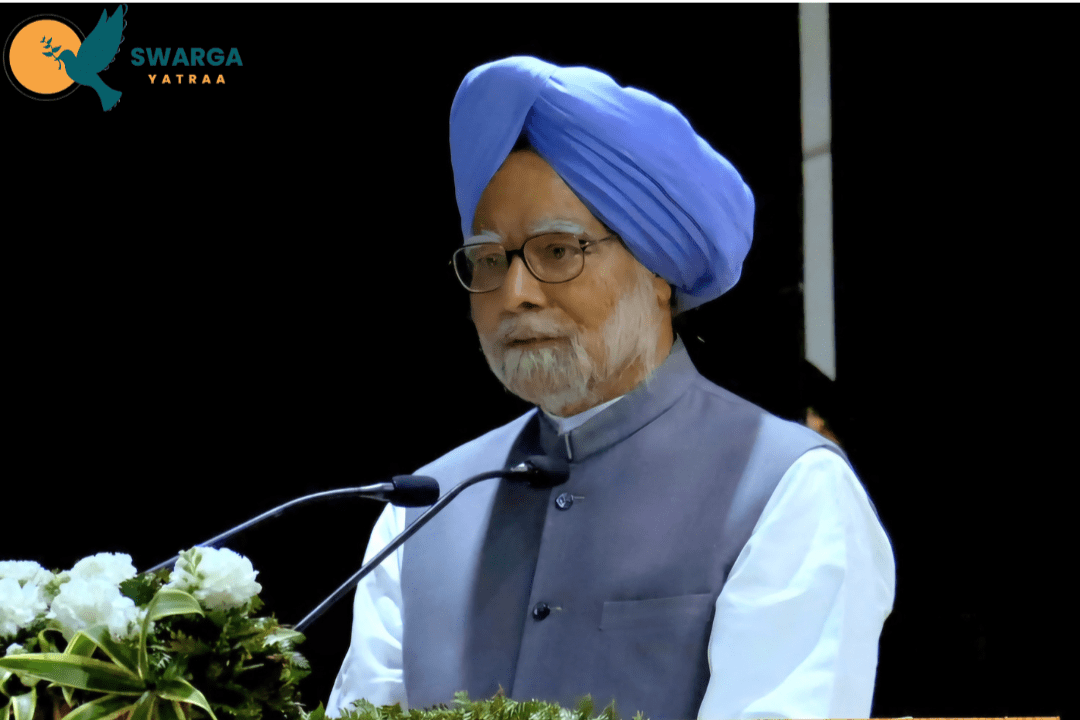
Dr. Singh’s tenure as Prime Minister began in May 2004 when Sonia Gandhi, leader of the Congress Party, chose him to lead the nation. He became the first Sikh Prime Minister of India, a historic moment that reflected India’s diversity.
First Term (2004–2009):
- Economic Growth:
India’s GDP grew at an impressive rate, establishing the country as an emerging global power. - Historic U.S.-India Nuclear Deal:
Signed in 2008, this agreement ended decades of nuclear isolation and allowed India access to global nuclear technology and fuel. - Social Welfare Programs:
- The National Rural Employment Guarantee Act (NREGA) provided employment to millions in rural areas.
- The Right to Education Act made education a fundamental right for children.
Second Term (2009–2014):
Dr. Singh’s second term saw both achievements and challenges:
- Infrastructure Development:
Massive investments in roads, airports, and power plants. - Challenges of Corruption:
Allegations of corruption, including the 2G spectrum and coal block allocation scandals, marred his government’s image. - Economic Slowdown:
Global financial crises and domestic policy paralysis slowed India’s growth.
Despite these challenges, Dr. Singh remained a symbol of integrity and humility.
Personal Values and Leadership Style
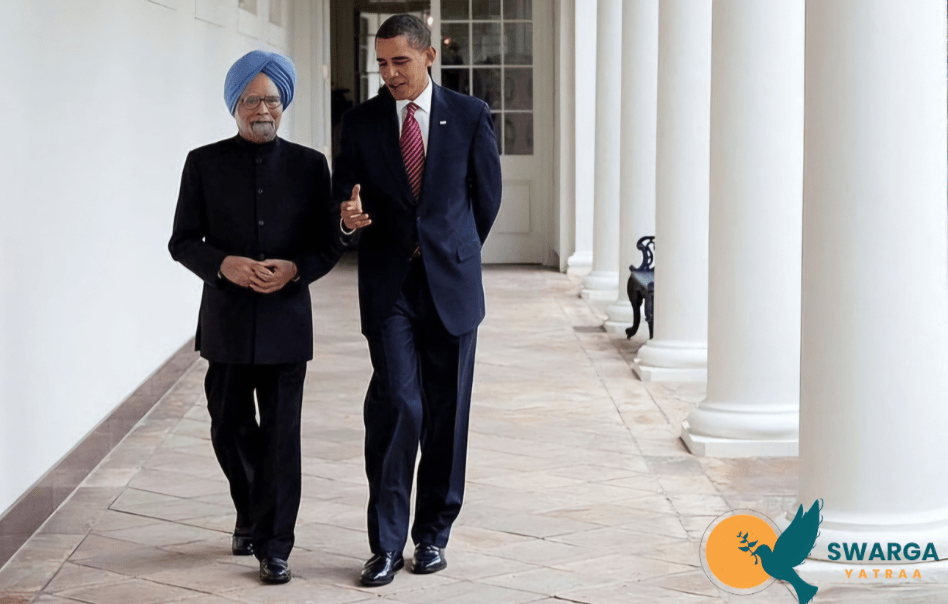
Dr. Manmohan Singh was widely regarded as a leader who embodied humility, wisdom, and a deep sense of purpose. His personal values and leadership style were key to his success in navigating India through complex challenges.
Leadership Approach:
- Consensus Building:
Leading a coalition government, especially during his tenure as Prime Minister, required deft handling of diverse political interests. Dr. Singh excelled in fostering dialogue and compromise without compromising on key national interests. - Quiet Authority:
Unlike many of his contemporaries, Dr. Singh avoided confrontational politics. Instead, he believed in letting his work and policies speak for themselves. This approach sometimes led to criticism for being too reticent, but it also earned him respect as a statesman. - Visionary Thinking:
Whether it was his role in liberalizing the economy in 1991 or negotiating the landmark U.S.-India nuclear deal, Dr. Singh always prioritized long-term national interests over short-term political gains.
Global Recognition:
His leadership style and personal values made him a respected figure on the world stage. Leaders like Barack Obama and Angela Merkel often spoke of him as a “man of uncommon wisdom.”
Legacy and Honors
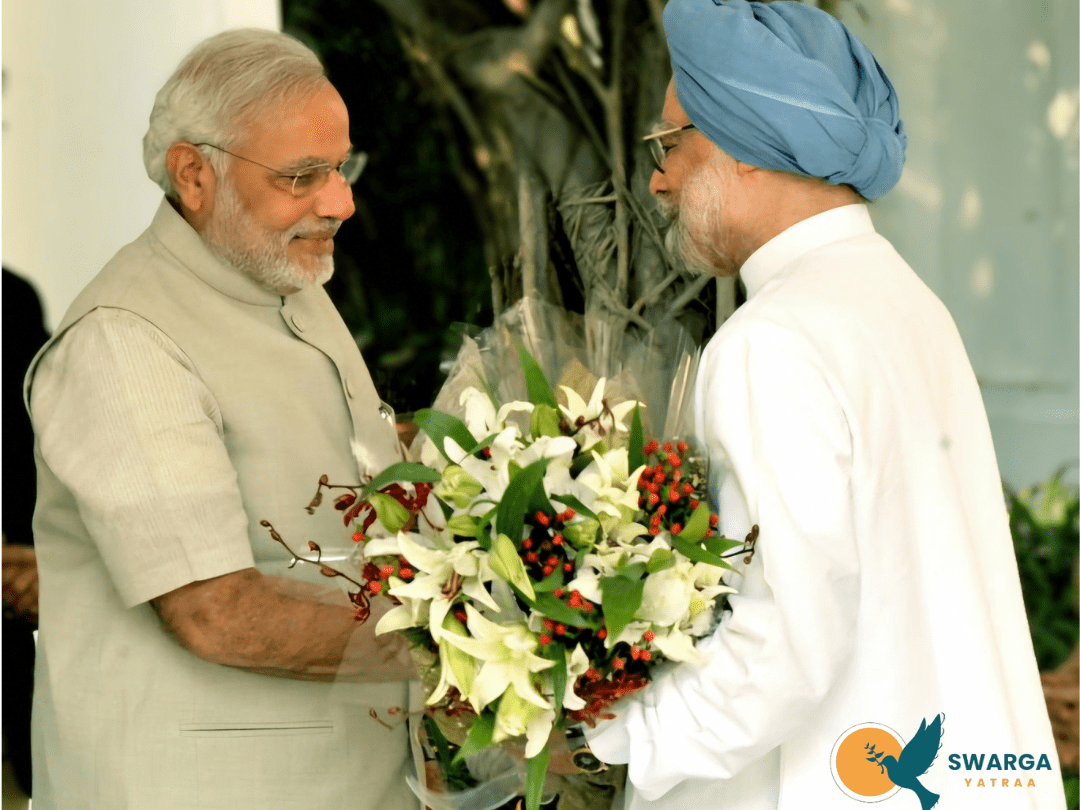
Dr. Singh’s impact on India and the world is undeniable, spanning economic, political, and social dimensions. His legacy is one of transformative change and a deep commitment to public service.
Economic Transformation:
- Economic Reforms (1991):
These reforms marked the beginning of India’s journey as a global economic powerhouse.
By dismantling restrictive trade and investment barriers, Dr. Singh set the stage for the IT boom and a surge in foreign direct investment. Sustained Growth (2004–2014):
During his tenure as Prime Minister, India experienced one of its fastest periods of economic growth.
His policies encouraged infrastructure development, innovation, and entrepreneurship.
Social Contributions:
- Poverty Alleviation: Programs like NREGA and the Right to Food ensured that India’s growth benefited the marginalized.
- Education and Healthcare: His government’s focus on universal education and rural health missions brought basic services to millions.
Global Diplomacy:
U.S.-India Nuclear Deal:
- This historic agreement not only boosted India’s energy security but also marked a turning point in India’s strategic relationship with the U.S.
- Dr. Singh showed remarkable resolve in defending the deal against domestic political opposition.
South Asia Relations: While his peace initiatives with Pakistan faced setbacks, his consistent emphasis on dialogue demonstrated his belief in peaceful coexistence.
Honors and Awards:
National Recognition: Padma Vibhushan, India’s second-highest civilian award (1987).
International Accolades:
- Honorary doctorates from over a dozen universities, including Oxford, Cambridge, and Yale.
- The World Statesman Award (2010) for his contributions to global leadership.
Final Years: A Life of Reflection and Quiet Influence
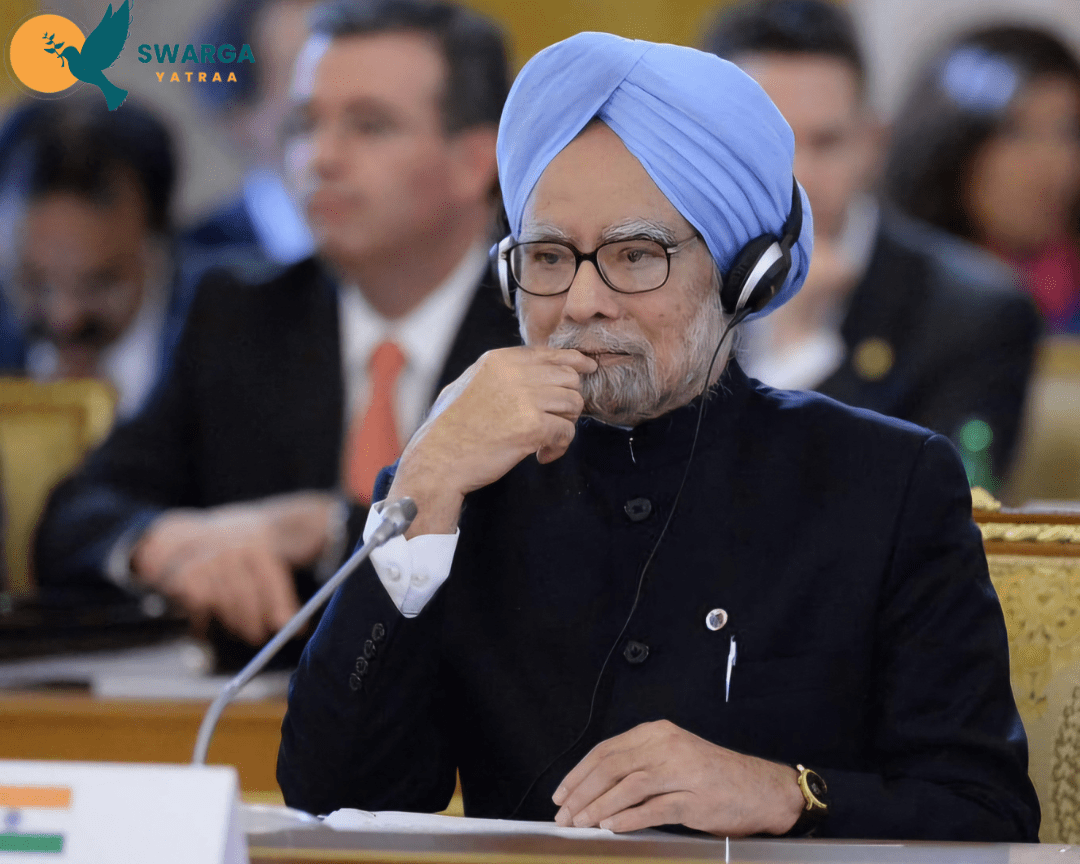
Dr. Singh retired from active politics in 2024, marking the end of an illustrious public career spanning over five decades. Even in retirement, he remained an advisor and guide, sharing his insights through lectures and publications.
Health and Personal Life:
In his later years, Dr. Singh’s health began to decline due to age-related ailments. Despite these challenges, he continued to write and reflect on the issues shaping India and the world.
Family Life: Dr. Singh was a devoted family man. His wife, Mrs. Gursharan Kaur, often accompanied him at public events, offering a glimpse into the personal side of a leader who rarely displayed his emotions. Together, they raised three daughters, who inherited his values of education and service.
Public Engagements: Even in his retirement, Dr. Singh participated in key academic and political discussions. His speeches during university convocations and economic summits were filled with wisdom and foresight.
The Nation Mourns - Passing of a Statesman: Dr. Manmohan Singh
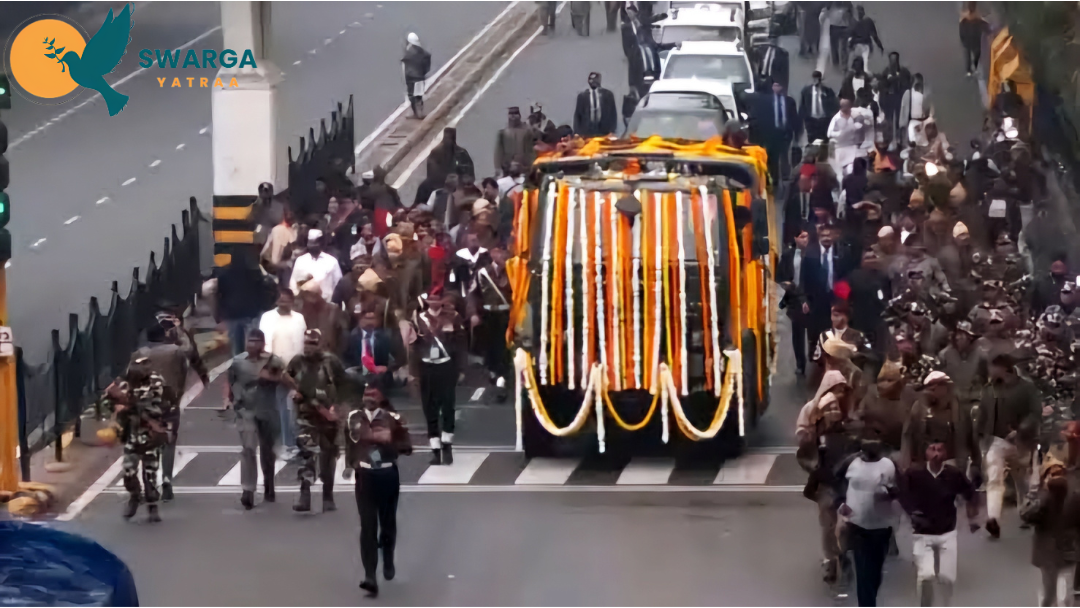
On December 26, 2024, Dr. Singh passed away peacefully in New Delhi. His demise was a profound loss for India and the world.
State Funeral:
A state funeral was held in his honor, attended by global dignitaries, political leaders, and citizens from all walks of life. His cremation took place at the Raj Ghat, a fitting tribute to a leader who dedicated his life to the nation.
Tributes:
Prime Minister’s Address: The current Prime Minister “Narendra Modi” called him “a guiding light for India’s progress.”
Global Leaders: Messages poured in from world leaders, highlighting his role in transforming India’s global image.
Public Grief: Citizens across the nation mourned his passing, organizing candlelight vigils and prayer meetings.
Conclusion: Honoring the Legacy of a Visionary Leader
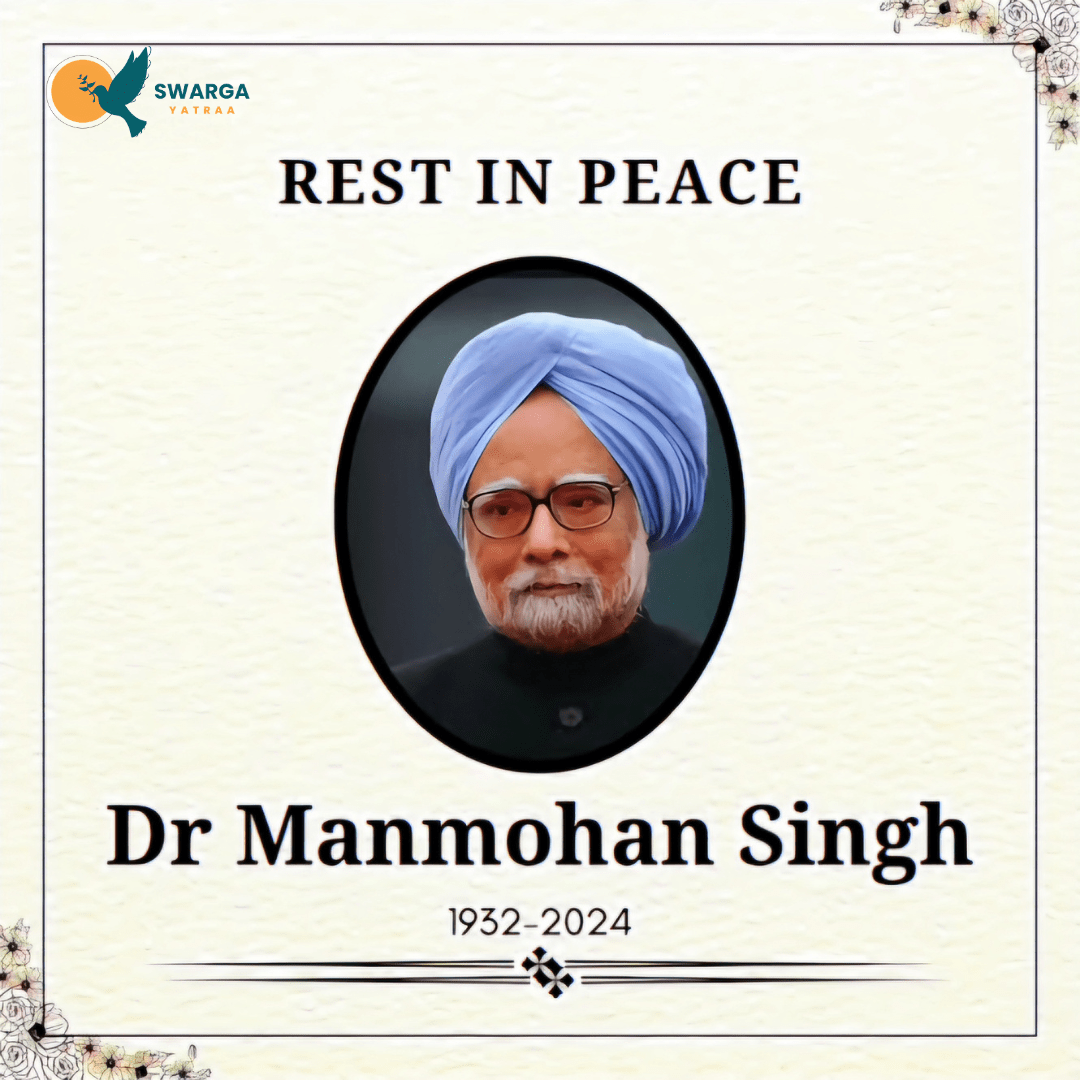
Dr. Manmohan Singh’s life was a testament to the power of knowledge, humility, and dedication to public service. From his pioneering economic reforms to his calm leadership during challenging times, he left an indelible mark on India’s history. As we remember him, his legacy serves as a beacon of hope and inspiration for building a progressive and inclusive nation.
At Swargayatraa, we believe in cherishing the memories of loved ones and celebrating their legacy with dignity and respect. Our dedicated services ensure that every farewell is a tribute to a life well-lived, filled with meaningful moments that bring solace to families. As we honor the memory of Dr. Manmohan Singh, we are reminded of the importance of creating lasting memories that keep the spirit of our loved ones alive. Let us help you commemorate their journey with care and compassion.


